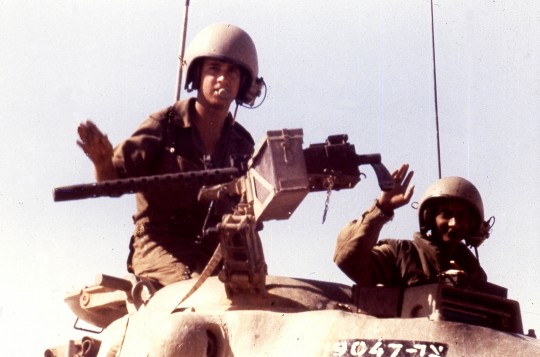JERUSALEM—A surprise attack on the country’s borders stuns the high command. Sensing imminent catastrophe, the defense minister instinctively reaches for the Bomb. He does not propose dropping it on the enemy, but staging a "demonstration" that will stop the enemy before the country is overwhelmed. Cooler heads in the system prevail. There will be no demonstration, no threat of the Bomb.
This outline of events in Israel on the second day of the Yom Kippur War as given by Prof. Avner Cohen, an academic versed in the history of Israel’s nuclear research. It has special relevance as the West and Iran wrestle over a nuclear deal.
It is unclear how a Middle Eastern entity—one with neither an internal system of checks and balances nor a superpower looking over its shoulder—would react if it was threatened and had access to a nuclear device. The threat of an Iranian bomb comes less from Iran itself than from the possibility of proliferation in a region rife with fanaticism and mortal grudges. It is a threat Iran itself should fear.
In October 1973, Egypt and Syria surprised Israel with a two-front attack thanks to a lapse in Israeli intelligence. Policymakers in Jerusalem were confident the Arabs would not attack, and that if they did, that Israel would have no problem dealing with them. Despite a buildup of enemy forces along its borders in the days before Yom Kippur, Israel did not mobilize its reserves.
Five Egyptian divisions with 100,000 men were drawn up along the Suez Canal. Hundreds of Israeli infantryman met them in a scattering of outposts and a single tank brigade. On the Golan, Israeli tanks were outnumbered 8-1 by those facing them across a narrow anti-tank ditch separating the armies. The Arab armies struck the afternoon of Yom Kippur.
Moshe Dayan helicoptered to the Northern Command headquarters the next day, where he learned the Syrians had broken through and that the Golan would likely fall. Engineers were already mining bridges over the Jordan River at the foot of the Golan Heights to prevent the Syrians from penetrating Israel proper. Dayan had himself patched through to the air force commander and ordered him to call off the attacks just launched on the Egyptian front and to send his planes north. But the Soviet-supplied SAM anti-aircraft missiles proved deadly and broke up the air attack.
Dayan then flew to Sinai to find a situation no less troubling. Unlike in the Six Day War, the Egyptian soldiers were standing firm. Armed with prodigious amounts of anti-tank weapons, including deadly new missiles, they had in 12 hours knocked out two-thirds of Israel’s only armored division deployed in Sinai.
Dayan was traumatized by what he had witnessed. Israel’s sense of security had rested on its air force, tank corps and intelligence services. All three had seemingly been neutralized. The enemy was pouring across the borders and fighting well while the bulk of Israel’s army was still in the process of mobilizing.
Returning to Tel Aviv in a devastated mood, he attended a meeting of the inner cabinet with Prime Minister Golda Meir. He proposed that Meir order the scientist heading Israel’s nuclear program to initiate preparations for a "nuclear demonstration."
Two ministers, who were Meir’s most trusted advisers, opposed the idea. The reserves would reach the battlefronts in the coming hours, and the tide would turn. Meir seemed relieved to be receiving such advice and told Dayan to "forget about it." The story was obtained by Cohen several years ago from an assistant to one of the ministers who was waiting for his boss in the corridor outside. Over lunch, the minister described what had happened.
Although the assistant did not describe what consisted a "nuclear demonstration," Cohen suggested that it might have referred to a high altitude explosion over unpopulated desert.
"Such blasts would be conducted at a time [shortly after dark] to make the demonstration visible in Cairo and Damascus," Cohen said.
The battle began to turn with the arrival of the reserves. By week’s end, Israeli forces were crossing the former Golan border into Syria. A few days later, on the Egyptian front, Gen. Ariel Sharon’s division led a crossing of the Suez Canal. A week after that, Egyptian leader Anwar Sadat requested a ceasefire.
It would be decades before the world learned Israel’s defense minister had considered a nuclear demonstration.
The writer is author of The Yom Kippur War.
